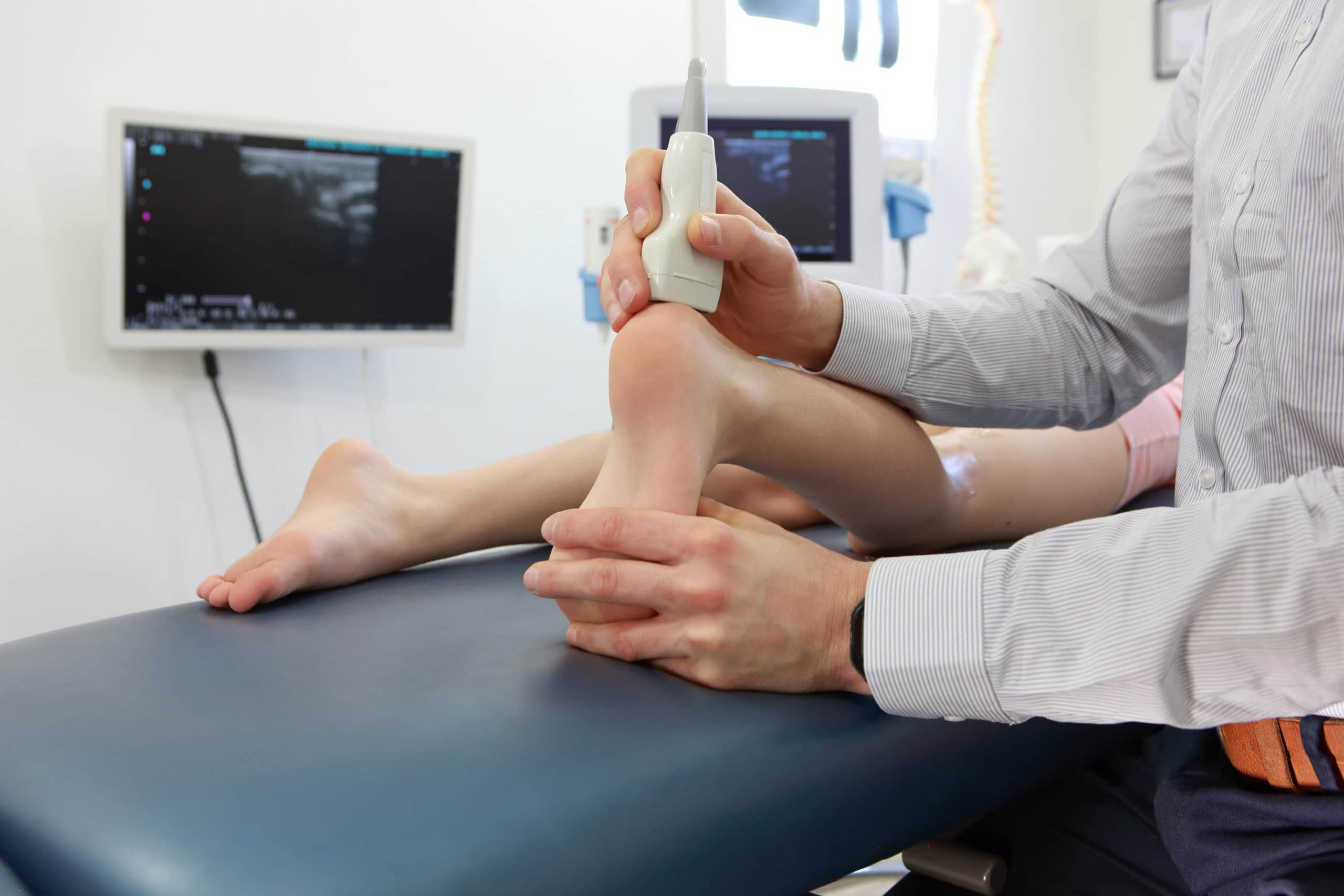Monitoring Bone Health with the Achilles Ultrasonometer
The health of your foot structure is only as good as the health of its parts. For some of our patients, our Achilles Ultrasonometer can be a very effective tool for gauging their risk of bone fracture throughout the body – all by measuring bone density in the heel.
While digital X-rays also give us some insight into a patient’s bone structure, the Achilles Ultrasonometer provides a different type of information that is no less important. The test is quick, comfortable, and can identify fracture risks from conditions such as osteoporosis well before other symptoms become evident.
Who Needs a Fracture Risk Assessment?
Almost everyone tends to lose bone strength as they age. However, certain factors and conditions leave some with a higher risk of fractures than others.
Osteoporosis, in which bones become more brittle and liable to break with time, is a very common condition. It affects more than half of Americans over the age of 50, both men and women.
However, women tend to be at a greater risk of osteoporosis and related problems. Women tend to have smaller and lighter frames to begin with, and the loss of estrogen following menopause also further reduces protection against bone loss.
Although cases may vary, typical risk factors for fractures include:
- Being female (with highest risks among white and Asian women)
- Being of older age, past menopause
- Having a family history of osteoporosis or related conditions
- Having a small, thin frame
- A lack of exercise
- A lack of calcium in the diet
- Having used certain medications (e.g. steroids, anticonvulsants)
- Having a history of alcohol or tobacco use
We are happy to discuss your risk factors with you and whether a bone density test is something you should receive at this time.
How Does the Achilles Ultrasonometer Work?
The Achilles Ultrasonometer measures bone density in the heel. It does so by sending ultrasound waves through soft tissues and into the bone, and then measuring what is reflected back.
Using the this information, we can determine the relative density of the bone compared to the ideal density found in a young adult. The less dense the bone is, the higher the general risk that it may fracture.
Since the heel is load-bearing, it tends to share a similar composition to bones in other areas of concern, such as the hip and spine. The heel provides us a much simpler way of gauging the relative fracture risks of these areas without having to test them directly.
What Should I Expect During the Test?
The test is quick and comfortable. You will be asked to sit down and place your bare heel within our portable testing unit.
In order to obtain a direct reading, warm water will fill membranes within the unit, which will contact your foot. Isopropyl (rubbing) alcohol may also be placed on your foot or the membranes to further improve the connection.
You will be asked to keep your heel as still as possible during the test, but it only takes about 1 minute. There is nothing you need to do for preparation or aftercare.
Is the Achilles Ultrasonometer Safe?
Yes it is. The test is non-invasive and does not use any radiation.
The only potential risk during the test is if you have a sore on the heel or sole of the foot, as it may increase infection risk. Please notify us of any such problems if we are not already aware of them.
A Proactive Approach to Bone Health
As podiatrists, there are many reasons we are interested in your bone fracture risk. We want to help you stay active while avoiding injuries that may limit your mobility and stability.
But regular bone density screenings can also provide helpful information toward preventing problems elsewhere throughout the body, as well. If you are at a higher risk for fractures, regular testing can help you track changes (positive or negative) in bone density over time to help you better manage your risk.
If you have questions or wish to schedule an appointment, call us at (480) 962-4281 or fill out our online contact form.

